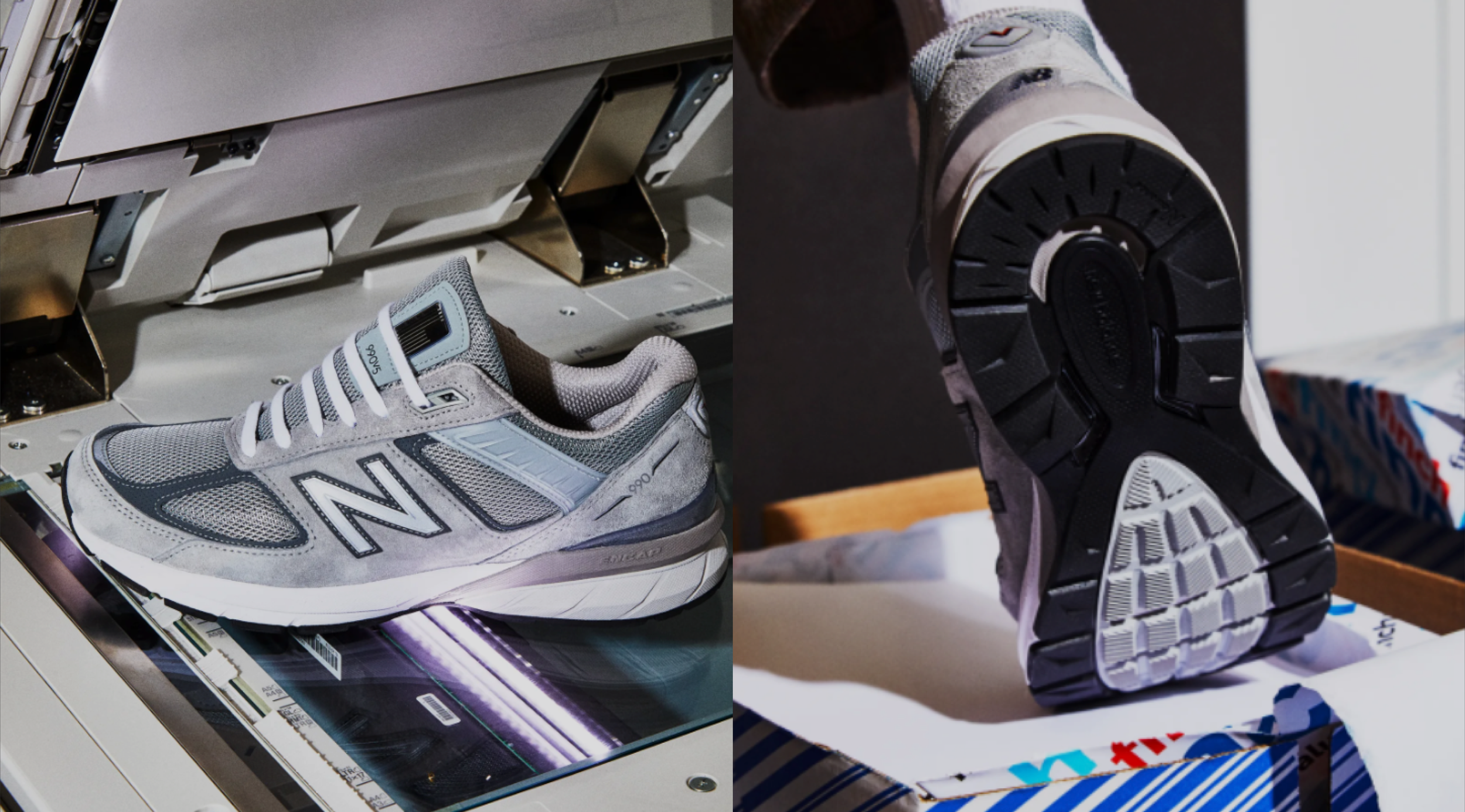
Image → Tim Zarki
NEWS • 26 April 2022
words by CFS editorial team
The Future of Footwear Manufacturing
The most recent CFS roundtable, explored the latest trends, new technologies within footwear design and the possibilities that additive manufacturing brings to the footwear industry.
Joined by Tanyaradzwa Sahanga, Product Creation Expert; Nils Altrogge, Head of Technology Innovation at ON; Katy O'Brien, Senior Manager, Footwear Innovation at New Balance; and Markus Glasser, Senior Vice President EMEA at EOS, all thought leaders in the space. CFS just hosted a roundtable discussion focusing on the future of footwear manufacturing, to speak to some of the companies and the people leading the way in footwear innovation and circularity.
Footwear is one of the fastest-changing categories pushing the boundaries of material innovation and new production processes. Due to the emergence of startups and established brands tapping into sustainable production methods and materials, we have already witnessed the adoption of recycled materials increase significantly pre-Covid, with a 70% increase y-o-y in 2019. There is also tremendous opportunity in the area, reports estimate the size of the sustainable footwear market will reach USD 11.8 billion by 2027.
New technologies in manufacturing such as 3D printing are changing the footwear industry, offering unprecedented possibilities, that are pushing 3D printing to become the largest consumer product segment in additive manufacturing by 2030. Additive manufacturing in footwear production is not new, however, with new more sustainable inputs on the horizon, it may open the way to a radical increase in material efficiency by using less raw materials and incorporating more sustainable materials. In addition, 3D printing enables a perfect fit shoe for everybody which can boost shoe production to the next level.
Here are the key takeaways from the conversation:
“Responsible, Re-evolutionary, Scale”
When asked to capture the future of the industry in as few words as possible, the attendees settled on: “responsible, re-evolutionary, scale”.
“We need to ensure that footwear is manufactured responsibly, we are working also towards circularity. Focusing on performance and individualism through customization” Markus Glasser — Senior Vice President EMEA, EOS
“There are several drivers we are hunting for sustainability, bringing down the impact, and performance, by delivering high-quality products. Re-evolution is about finding a good mixture of healthy evolution of the existing manufacturing processes combined with new processes that are completely unknown to the industry at the moment” Nils Altrogge — Head of Technology Innovation, ON
It’s not about sustainability vs. performance, rather combining both
“What we really are targeting, within the sustainable innovation team is performance without sacrificing sustainability and vice-versa and also the scale. My view is that there needs to be an impact at scale that relates with sustainability” Katy O'Brien — Senior Manager, Footwear Innovation, New Balance
“Performance and sustainability should go hand in hand, today you can reach amazing performance from bio-resources. The goal is to show and prove that sustainability and performance are not opposite ” Nils Altrogge — Head of Technology Innovation, ON
“Additive manufacturing can improve performance. Digital foam product allows guided performance, which is It is improved in regards to the direction each wants to go to. For example, midsoles can be segmented by different areas so therefore you have the ability to change comfort; stability; support; to keep in mind the approach of cradle to cradle effect and sustainability.” Markus Glasser — Senior Vice President EMEA, EOS
Approach towards material innovation is a critical
“We have two different goals that we are using as tools to bring the impact in the future down: first, moving away from fossil resources on the materials and on the other hand, becoming circular; and what you have to do here, for example from moving away from fossil resources is replacing petrol-based materials with bio-synthetics. Another option is using advanced recycled materials - what I mean with advanced is not materials that have to be downcycled, only mechanical recycled materials; when you grind midsoles and mix them in another one you always lose a little bit of performance. Our newest ambition at On is using carbon emissions to make new materials and become circular” Nils Altrogge — Head of Technology Innovation, ON
“We are focusing on recyclables and bio-feedstocks to minimize our reliance on fossil and petroleum-based feedstocks. Circular footwear solutions are not only about being more responsible for the product when reaching the end of life but also start to tackle the challenge of creating recycled feedstocks that can be used in a way that they are powerful instead of just degrading over and over ” Katy O'Brien — Senior Manager, Footwear Innovation, New Balance
Collaboration goes beyond competition when addressing circularity
“One big takeaway from recent conversations with other brands is in regards to circularity, we only succeed if we work together on a consortium approach. It is about scale, how can we make circularity economically feasible, put pressure on other industries moving into this direction, is time to partner in strong consortiums to put on this direction.” Nils Altrogge — Head of Technology Innovation, ON
“There is an opportunity for brands to come together and electrify supply chains. One factory could be the manufacturing provider for 10+ brands, working together community can push towards change” Katy O'Brien — Senior Manager, Footwear Innovation, New Balance
“We need to talk about the entire value chain. It means we need to talk about end-to-end solutions, in this case, the footwear industry; it means we cannot do it alone. We need partners who take care of processes, design, and software solutions, this is what we have done with the AM Footwear process together with Siemens. End to end solutions require partners for different parts of the value chain; more efficient electro engines; it can be a massive change at an internal level, how to manage the company and how to approach vertical collaborations” Markus Glasser — Senior Vice President EMEA, EOS





